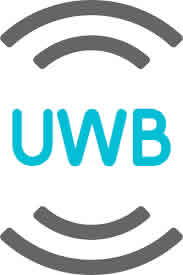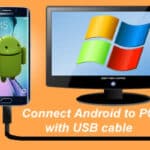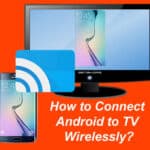What is UWB?
Ultra-Wideband (UWB) is a short-range wireless communication technology that uses very short pulses of radio waves to transmit data. UWB is capable of transmitting data at very high speeds and can accurately track the location of devices.
How does UWB work?
UWB works by transmitting very short pulses of radio waves, typically in the GHz range. These pulses are so short that they do not interfere with other wireless signals. UWB is also able to penetrate objects, such as walls and furniture, which makes it ideal for indoor applications.
Not all phones or tablets will support UWB. How do you know if your device has UWB?
- Open Settings; Connected devices
- Touch on Connection Preferences; Then Enable UWB
- UWB is now enabled and you can use it with any device that recognizes the signal.
Benefits of UWB on Android
UWB offers a number of benefits for Android devices, including:
- Improved wireless functions: UWB can improve the performance of wireless functions such as Wi-Fi, Bluetooth, and NFC.
- More accurate indoor positioning: UWB can be used to accurately track the location of devices indoors, which can be used for applications such as navigation, asset tracking, and augmented reality.
- Faster file sharing: UWB can be used to share files between devices at very high speeds.
- Secure digital key sharing: UWB can be used to securely share digital keys between devices, which can be used for applications such as car unlocking and smart home access.
Use cases for UWB on Android
UWB can be used for a variety of applications on Android devices, including:
- Mobile payments: UWB can be used to make mobile payments at point-of-sale terminals.
- File sharing: UWB can be used to share files between devices at very high speeds, without the need for an internet connection.
- Object tracking: UWB can be used to accurately track the location of objects, such as keys, wallets, and pets.
- Indoor navigation: UWB can be used to provide accurate indoor navigation, even in GPS-denied environments.
- Augmented reality: UWB can be used to create augmented reality experiences, such as games and educational apps.
- Car unlocking: UWB can be used to securely unlock cars and other vehicles.
- Smart home access: UWB can be used to securely unlock doors and other smart home devices.
Future of UWB on Android
UWB is a new technology, but it is rapidly gaining popularity. As more and more Android devices support UWB, we can expect to see new and innovative applications emerge.
Examples of how UWB is being used on Android devices today:
- Google Pay: Google Pay supports UWB payments at a number of select retailers.
- Samsung Pay: Samsung Pay supports UWB payments at a number of select retailers.
- Tile: The Tile app uses UWB to help users find their lost items.
- Google Maps: Google Maps is using UWB to provide more accurate indoor navigation.
- Pokémon GO: Pokémon GO is using UWB to create new augmented reality experiences.
- BMW: BMW is using UWB to unlock its cars.
These are just a few examples of how UWB is being used on Android devices today. As the technology continues to develop, we can expect to see even more innovative applications emerge.
Additional tips for using UWB on Android:
- Make sure that both devices are running the latest version of the software.
- Keep your devices close together when using UWB.
- Avoid using UWB in areas with a lot of wireless interference.
- Disable UWB when you are not using it to save battery life.
Common problems and solutions for using UWB on Android:
| Problem | Solution |
|---|---|
| UWB not working | Make sure that your phone and the other device support UWB. Make sure that UWB is enabled on both devices. Try restarting both devices. Try updating the firmware on both devices. |
| UWB not detecting other devices | Make sure that the other device is within range. Try moving closer to the other device. Try restarting both devices. |
| UWB slow or unreliable | Make sure that there is no interference from other wireless devices. Try moving to a different location. Try restarting both devices. |
| UWB battery drain | Disable UWB when you are not using it. Reduce the frequency at which your phone scans for UWB devices. Use a battery-saving mode on your phone. |
If you are still having problems with UWB on Android, you can contact your phone manufacturer or the manufacturer of the other device for support.
Frequently asked questions and answers for using UWB on Android:
Q: How can I enable UWB on my Android phone?
A: To enable UWB on your Android phone, you will need to go to the Settings app and then tap on “Connected devices.” Next, tap on “Connection preferences” and then tap on “UWB.” Finally, tap on the toggle switch next to “UWB” to enable it.
Q: How can I troubleshoot problems with UWB on Android?
A: If you are having problems with UWB on Android, you can try the following:
- Make sure that both devices support UWB.
- Make sure that UWB is enabled on both devices.
- Restart both devices.
- Update the firmware on both devices.
- Make sure that the devices are within range.
- Move closer to the other device.
- Move to a different location to avoid wireless interference.
- Disable UWB when you are not using it to save battery life.
Additional helpful information:
When using UWB it will also be disabled when you turn on Airplane mode. How to use Airplane Mode on Android?
For more information about using NFC on Android – Unleash NFC Power on Android




